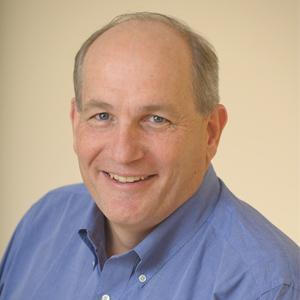
Research Topics
Millions of years ago, a eukaryotic cell swallowed whole the bacterial ancestor of the mitochondrion and put it to work converting nutrients into energy. Creating energy is an inherently dangerous process requiring careful monitoring and quick eradication of damaging byproducts. Cells therefore have mitochondrial function under tight regulatory control. Since his discovery some years ago that mitochondria in the heart can supply energy at a rate that perfectly matches a range of physiological demands, Dr. Balaban has sought to understand how mitochondria are regulated to ensure this metabolic homeostasis.
Dr. Balaban bases his research on the hypothesis that mitochondria are modulated to support cellular metabolic homeostasis chronically by altering mitochondrial content, composition, and cellular location. Given the complexity of the mitochondrial proteome, it is clear that the focus must be on regulatory networks and manipulations of functional pathways, not on a few lone proteins. Accordingly, his laboratory takes a systems approach to studying mitochondrial protein composition and distribution in relation to function. He and his colleagues study post-translational modifications of mitochondrial proteins to understand how proteins and enzymes rapidly adjust to maintain metabolic homeostasis under acute changes in energy demand.
Dr. Balaban’s efforts to reconstitute the information gained from these proteomics approaches into a picture of mitochondrial regulation are based on models of energetic flux that make relatively simple assumptions about the relationship of enzyme concentration to reaction velocity. These models will feed back into experimental design in a positive spiral of research to form an increasingly sophisticated view of metabolic homeostasis.
Complementing biochemical, proteomics-based, and computational approaches, Dr. Balaban’s laboratory studies the changes in mitochondria that occur in vivo. Moving from an earlier interest in nuclear magnetic resonance (NMR) to study physiological changes associated with energetics, Dr. Balaban and his colleagues have developed non-linear optical microscopy techniques for observing the subcellular dynamics, topology, and orchestration of mitochondria in muscle relative to exercise. The unique aspect of this approach is the ability to deliver light deep inside tissues using infrared light. It is also the most efficient method of imaging fluorophores since all of the emitting light can be used to create a fluorescent image.
As a serendipitous offshoot of their efforts in non-linear microscopy, Dr. Balaban and his colleagues discovered that they could visualize the composition of blood vessel walls without the need for dyes. They are using this method to study the early stages of atherosclerosis. Based on the evidence they have obtained, Dr. Balaban is testing the hypothesis that atherosclerotic lesion formation is dependent upon the extracellular matrix composition of the vascular wall.
Biography
Robert Balaban received his B.S. in biology and chemistry from the University of Miami in 1971 and his Ph.D. in physiology and pharmacology from Duke University in 1980. He was awarded a NATO fellowship to the Department of Biochemistry at the University of Oxford in 1981. In 1982, Dr. Balaban joined the NIH as a staff fellow in the NHLBI Laboratory of Kidney and Electrolyte Metabolism. He was named Chief of the newly formed Laboratory of Cardiac Energetics in 1988. Dr. Balaban served as trustee and president of the Society for Magnetic Resonance in Medicine from 1994 to 1995, of the International Society for Magnetic Resonance in Medicine from 1995 to 1996, and of the Society for Cardiovascular Magnetic Resonance from 1999 to 2001. He is a member of the American Physiological Society, the International Society for Magnetic Resonance in Medicine, the Society for Cardiovascular Magnetic Resonance, the American Society for Cell Biology, and the Biophysical Society.
Selected Publications
- Glancy B, Hartnell LM, Malide D, Yu ZX, Combs CA, Connelly PS, Subramaniam S, Balaban RS. Mitochondrial reticulum for cellular energy distribution in muscle. Nature. 2015;523(7562):617-20.
- Kosmach A, Roman B, Sun J, Femnou A, Zhang F, Liu C, Combs CA, Balaban RS, Murphy E. Monitoring mitochondrial calcium and metabolism in the beating MCU-KO heart. Cell Rep. 2021;37(3):109846.
- Campbell-Washburn AE, Ramasawmy R, Restivo MC, Bhattacharya I, Basar B, Herzka DA, Hansen MS, Rogers T, Bandettini WP, McGuirt DR, Mancini C, Grodzki D, Schneider R, Majeed W, Bhat H, Xue H, Moss J, Malayeri AA, Jones EC, Koretsky AP, Kellman P, Chen MY, Lederman RJ, Balaban RS. Opportunities in Interventional and Diagnostic Imaging by Using High-Performance Low-Field-Strength MRI. Radiology. 2019;293(2):384-393.
- Glancy B, Balaban RS. Energy metabolism design of the striated muscle cell. Physiol Rev. 2021;101(4):1561-1607.
- Glancy B, Hartnell LM, Combs CA, Femnou A, Sun J, Murphy E, Subramaniam S, Balaban RS. Power Grid Protection of the Muscle Mitochondrial Reticulum. Cell Rep. 2017;19(3):487-496.
Related Scientific Focus Areas

Biomedical Engineering and Biophysics
View additional Principal Investigators in Biomedical Engineering and Biophysics


This page was last updated on Thursday, August 21, 2025